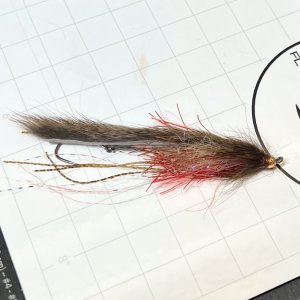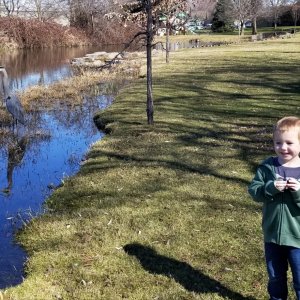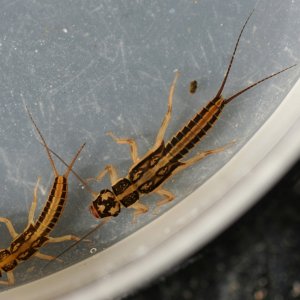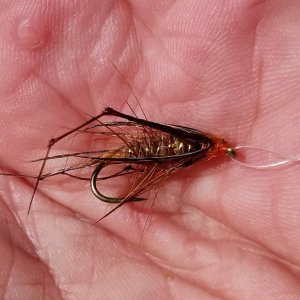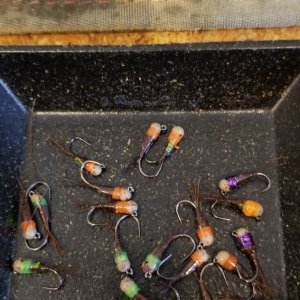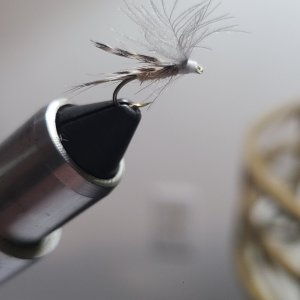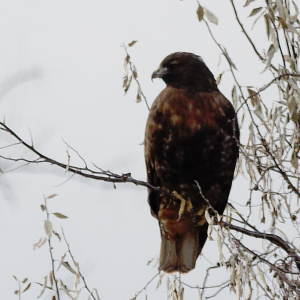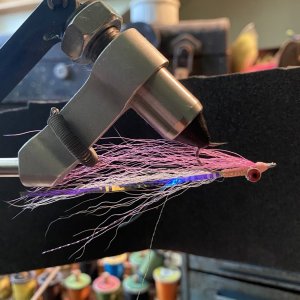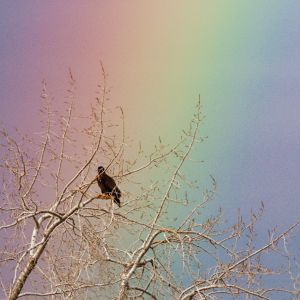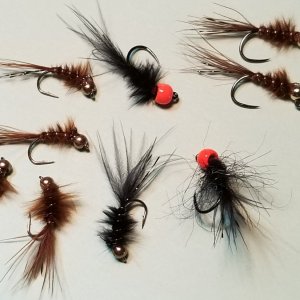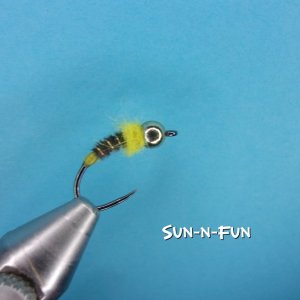I asked a question of Jay. I am quite sure that he was not working on the Columbia.They see summer and winter steelhead as bycatch in Columbia River spring Chinook fisheries.
You are using an out of date browser. It may not display this or other websites correctly.
You should upgrade or use an alternative browser.
You should upgrade or use an alternative browser.
Petition to amend and repeal 2023-2024 winter steelhead season on the Olympic Peninsula
- Thread starter SeaRunner
- Start date
There are times when the best available science is the determining factor in decisions made by government agencies and times when other things take precedance in decision making.Yup, I have been fishing for steelhead and generally playing around rivers that were heavily fished for over 40 years and the absence of dead steelhead is striking and in my mind absolute proof that nearly all steelhead caught and released survive. Even those caught with bait.
You mentioned 12 days of fishing and 10 dead steelhead. Fleet wide and season wide, that is no small impact.
I once heard a region 5 steelhead biologist specifically say that South Toutle river steelhead have no chance of long term survival in the face of in river commercial spring Chinook netting.
Half of the Wind river summer steelhead run is harvested in the 8 miles from Bonneville dam where there passage is recorded by pit tags and Shippard Falls where they are recorded again.( tribal netting) HALF the run!
Now I don't begrudge commercial and tribal fishermen their livelihoods, but in light of their impacts it is sheer idiocy to shut down any steelhead sport fisheries.
If this is science then science be damned and let's go with common sense.
Most decisions are made with all factors being weighed. It's the whole pluralistic society thing. Life is not black and white. Many things are true at one time.
While there is no empirical indication that CNR steelhead seasons in WA (which is virtually all wild steelhead in WA) is reducing the productivity of any steelhead population, it surprises me that conservationists who are also anglers embrace such extreme restriction of angling. Of course, if conservation is the only objective, then closing all the water all the time to all the fishing will achieve that. However, that isn't conservation so much as it's altruism. And that's not a bad thing; just not my thing.
I don't support petitions of this sort. Mainly because the evidence isn't presented. There is a whole world of sub-lethal effects that might be negative. But we can't or haven't measured them. I don't agree that the "cautionary principle" means we should simply not fish because we might have a negative impact. Fishing does have a negative impact. I can't prove it, but I'm fairly certain that the fish don't approve of it. I'm more interested in preventing the negative impacts that include killing so many fish that the spawning population is reduced such that the carrying capacity of the habitat cannot be used.
Not all who claim to be conservationists are conservationists. Not all who claim to be anglers are anglers. People and groups don't often say what they really are. When they show you, believe them.
My main concern with the closing of fisheries to recreational anglers is a generational erosion of support for conservation because fish/fisheries will be front-of-mind to less people. I mean, if we weren’t all anglers, would we care as much about these places? I’d like to think so, but…
Also, my career is in open space conservation. My passion for work is directly tied to a youth spent fishing, and I hear that from a lot of colleagues.
Also, my career is in open space conservation. My passion for work is directly tied to a youth spent fishing, and I hear that from a lot of colleagues.
I'm so glad commercials get a pass. It's a way of life. You can trust the Gorton's fishermen. Such a green and noble industry.Completely unrelated, or not.....
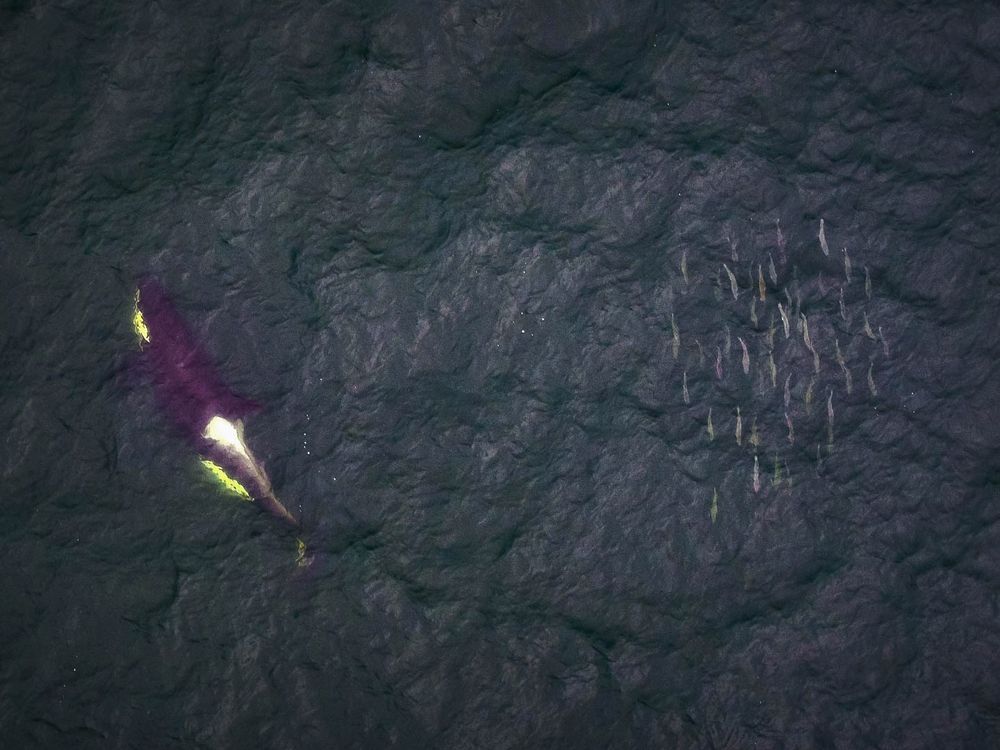
B.C. trawlers dump thousands of salmon, depleting orcas’ food source: wildlife group
The group says the report estimates more than 20,000 chinook caught in the nets were dead and thrown overboardvancouversun.com
I fall right down the middle on this issue. Some steelhead definitely die in recreational fisheries. I've seen a few floaters (and sinkers) over the years, but far fewer than I think I would have seen if we were actually killing the 10% they allocate to our few, open fisheries. I don't think it's wise or prudent for us to assume we do no harm to steelhead by fishing, but I think 10% mortality is at least double the reality, and if that could somehow be proven with data, it might mean a few more opportunities to catch and release. That's tricky, imperfect science, though, and when we're dealing with such small numbers to begin with, over-adjusting in the other direction could prove catastrophic.
Given the choice (as if LOL), I suppose I would prefer an overestimation of our impact versus the alternative, because I do care (if only slightly) more about the long-term survival of the species than my ability to fish for them, but I strongly suspect we could be fishing the Chehalis tribs right now (as an example) without driving many more nails in any proverbial coffins.
I certainly don't agree with the proposal to close the Quileute and Hoh. To do so would probably save a few wild fish, but not enough to make any perceptible difference in the overall health of the runs, and it would likely eliminate the popular hatchery fishery on the Bogachiel in Dec.-Jan. (which, to the OP's point, might have been the intended outcome). Like it or not, that fishery represents an important opportunity and generates a lot of commerce in and around Forks; probably enough to justify the risk of losing a few wild fish at the front of the run, at least in my mind. Of course, if there were solid science showing that the early component of the wild run is significantly endangered by that fishery (or the presence of the hatchery fish), I would have to support ending it.
I think the single most important thing we need to do for the future of our anadromous fisheries is to get state and tribal fish managers on the same page with regard to escapement goals and fishery impacts. If we're going to put our faith in science (I see no better alternative), we need to use the best science available. When two parties who are supposed to be co-managers operate from different baselines, it should be no surprise they disagree on so many "facts."
There's a lot of vitriol going around these days, which is unfortunate, because angry rhetoric is a barrier to the productive discourse we need to be having between all stakeholders. We all want better transparency from our co-managers, and I think that starts with both co-managers operating on the same (hopefully valid) assumptions.
Given the choice (as if LOL), I suppose I would prefer an overestimation of our impact versus the alternative, because I do care (if only slightly) more about the long-term survival of the species than my ability to fish for them, but I strongly suspect we could be fishing the Chehalis tribs right now (as an example) without driving many more nails in any proverbial coffins.
I certainly don't agree with the proposal to close the Quileute and Hoh. To do so would probably save a few wild fish, but not enough to make any perceptible difference in the overall health of the runs, and it would likely eliminate the popular hatchery fishery on the Bogachiel in Dec.-Jan. (which, to the OP's point, might have been the intended outcome). Like it or not, that fishery represents an important opportunity and generates a lot of commerce in and around Forks; probably enough to justify the risk of losing a few wild fish at the front of the run, at least in my mind. Of course, if there were solid science showing that the early component of the wild run is significantly endangered by that fishery (or the presence of the hatchery fish), I would have to support ending it.
I think the single most important thing we need to do for the future of our anadromous fisheries is to get state and tribal fish managers on the same page with regard to escapement goals and fishery impacts. If we're going to put our faith in science (I see no better alternative), we need to use the best science available. When two parties who are supposed to be co-managers operate from different baselines, it should be no surprise they disagree on so many "facts."
There's a lot of vitriol going around these days, which is unfortunate, because angry rhetoric is a barrier to the productive discourse we need to be having between all stakeholders. We all want better transparency from our co-managers, and I think that starts with both co-managers operating on the same (hopefully valid) assumptions.
Commercial catches of steelhead in the ocean has been brought up a number of times. When steelhead smolt to adult returns plummeted in the early 1990s, ocean bycatch was suggested as the culprit by a lot of sources - mainly fishermen. And there was a lot of pirate style high seas fishing going on. A group out of Alaska even started up a patrol group in response because of salmon interceptions. I forget the name of that outfit. So WDFW even delved into the issue, which was pretty outside the box for that agency. The upshot, however, is that even though steelhead were being caught on the high seas, and even with unauthorized pirate style fishing going on, WDFW's best estimate, rounded up for any error, is that bycatch maybe accounted for 3% of west coast steelhead being intercepted. It seems that people are just very unwilling to accept that ocean productivity, at least in the NE Pacific, has declined. It could be a combination of ocean acidification, changes in coastal upwelling, changes in forage and forage composition, like lipid and protein balance among the available forage. Whatever it is might be complex and dynamic enough that scientists can't catch up fast enough to understand it. It's just so much easier to say that, yeah, high seas bycatch, because it's easier to blame a boogeyman that to accept of try to understand complicated situation.I disagree. The fishery I worked in was monitoring an in river Tribal fishery, so maybe it isn’t a great example of the mortality to steelhead due to nets in the ocean, but you can’t ignore the scale of fisheries across the entire PNW and how it would all add up. I also think the reporting numbers of bycatch of all types of fish isn’t accurate because it would look bad. The more I read about this stuff the more I suspect we have the fox guarding the hen house and the regulators aren’t willing to make the tough decisions. Just the easy ones like closing fisheries to sporties. I’ve worked with fisheries managers and I know how much pressure there is to keep commercial fisheries open. It is literally scary for them to consider closing a fishery.
Oh, and BTW, it is a "You can run, but you can't hide" kind of world these days. My SIL is a researcher with Global Fishing Watch which monitors fishing activity all over the world's oceans via satellite. It's pretty cool stuff.
It is more than, and it has. The Saltonstall-Kennedy Grant report on Skagit steelhead involved capturing a lot of wild steelhead for genetic data and acoustic tagging. These fish were handled more than ordinary CNR, but it also involved experienced anglers. The incidental mortality rate was less than 2%. I conducted a wild steelhead broodstock program on the Skagit in the late 1980s, which involved more handling than ordinary CNR too. And the incidental mortality rate was 2%. Smalma supervised a similar wild broodstock program on the Skagit and Sauk Rivers, and as I recall, he reported an incidental mortality rate of 4%. So the WDFW rate of 10% is conservative compared to empirical data.but I think 10% mortality is at least double the reality, and if that could somehow be proven with data,
Pink Nighty
Life of the Party
In your eyes, why do we continue to use 10% as the mortality rate then?It is more than, and it has. The Saltonstall-Kennedy Grant report on Skagit steelhead involved capturing a lot of wild steelhead for genetic data and acoustic tagging. These fish were handled more than ordinary CNR, but it also involved experienced anglers. The incidental mortality rate was less than 2%. I conducted a wild steelhead broodstock program on the Skagit in the late 1980s, which involved more handling than ordinary CNR too. And the incidental mortality rate was 2%. Smalma supervised a similar wild broodstock program on the Skagit and Sauk Rivers, and as I recall, he reported an incidental mortality rate of 4%. So the WDFW rate of 10% is conservative compared to empirical data.
Best to err on the side of the fish, no?In your eyes, why do we continue to use 10% as the mortality rate then?
This happened a few years ago. It had to do with spring Chinook and the Columbia River. I sometimes like to use the term, "informed by science." There was some science available, but it wasn't conclusive. Ten percent incidental mortality was the number that NMFS, ODFW, WDFW, and the Columbia treaty tribes were able to agree on. Some times it's not science. Some times it's not common sense. Some times it ends up being the art of the possible. So WDFW adopted 10% statewide from what I can tell. In one case, one or more treaty tribes wanted WDFW to use 100% applied to a sport fishery, and amazingly, WDFW didn't cave. I won't say that 10% is here to stay in all cases, but I think it's safe to say that it will take a mountain to move it. And I don't mean a mountain of science.In your eyes, why do we continue to use 10% as the mortality rate then?
Yeah!Best to err on the side of the fish, no?
That 10% value was used from the beginning of the onset of wild release and CnR seasons in steelhead management. In fact being able to say that the assumed value was erring on the side of the wild fish was key to selling that change in sport steelhead seasons. I still have the scars from a public meeting in 1984 where out of more than 250 anglers less than the fingers on two hands were convinced that wild steelhead release would not work, and the river would be "awash" with dead steelhead. Fortunately, the regulation worked with season similar lengths wild escapements increased and we now have a foundational tool for the managers to provide opportunity while minimizing wild fish impacts.
In full disclosure in 60 years of releasing steelhead and 50 years of releasing all wild steelhead dozens of those fish have died as a result of their encounters with me. Generally, the mortality rate of the fish released is significantly dependent on where the fish is hooked. Especially critical areas include eyes, tongue, gills, etc. which in turn can be dependent on the gear used. Typically, more fish are hooked in "critical" areas with bait than say on flies.
Hooking mortality studies can be challenging to do and often suffer from small sample sizes and being nonrepresentative of the angler community. Generally wild brood stock captures as mentioned by Salmo_g have low capture to spawning mortalities. However, those programs tend to collect fish near spawning. With salmon and steelhead fresh run fish that are silver bright and whose scales are not set (easily shed scales) are less tolerate of handling those that have matured, having colored and having scales deeply set. An example is a north sound Chinook brood stock program, when those fish were captured 6 weeks or more before spawning the mortality (60 to 80%) was significantly higher than those collected with the same gear a couple weeks prior to spawning (2 to 4%). I would expect the release mortality of a chrome Skagit steelhead caught in early February would be higher than that for the same fish being caught in two months later.
For winter fish one study were hook and lined fish had radio tags surgically insert. Those fish experienced the same low mortalities as seen in brood stock studies but very few survive to return to Puget Sound. In this case a lower per cent made it back to the sound than the number of repeat spawners seen. However again this "study" had a low sample size. Given the importance of repeat spawners (and their higher fecundity) to population stability this was concerning.
Bottom line until such time as there a larger body hooking mortality studies covering the range of expected encounters I full support continuing to use the conservative 10%. For this angler erring on the side of the wild resource is responsible management.
Curt
Rob Allen
Life of the Party
ONLY as it relates to sport anglers, for everyone else it's a free for all.Best to err on the side of the fish, no?
Using 10% when the actual number is 2% is not scientific.
But the 2% value isn't representative of the general angling community participating in CNR fishing seasons. I thought I made the point that 10% had some science (lower river Chinook with scales not fully set are more vulnerable than fish with hardened scales; see Smalma's post above). Absent conclusive scientific evidence, which there hardly ever is, going with the art of the possible is as good as it gets in many cases.ONLY as it relates to sport anglers, for everyone else it's a free for all.
Using 10% when the actual number is 2% is not scientific.
RCF
Life of the Party
ONLY as it relates to sport anglers, for everyone else it's a free for all.
Using 10% when the actual number is 2% is not scientific.
10% sounds good. Gotta account for the other sport anglers (tweekers and poachers).
Can you prove that 2%...scientifically? Or do we just continue the circular argument?Using 10% when the actual number is 2% is not scientific.
Rob Allen
Life of the Party
The poachers who go unsupervised and increase their impact when rivers are closed and devoid of true sport anglers.10% sounds good. Gotta account for the other sport anglers (tweekers and poachers).
Rob Allen
Life of the Party
Lower river spring Chinook caught by guys trolling herring with double hook rigs and letting the fish "eat" the bait.. I remember that study on the lower Columbia/Willamette.. it has absolutely no bearing on steelhead fisheries.But the 2% value isn't representative of the general angling community participating in CNR fishing seasons. I thought I made the point that 10% had some science (lower river Chinook with scales not fully set are more vulnerable than fish with hardened scales; see Smalma's post above). Absent conclusive scientific evidence, which there hardly ever is, going with the art of the possible is as good as it gets in many cases.
You're observed 2% is much more representative of even the most careless CnR anglers. In my opinion.
Any way you slice it sport anglers get crapped on, yes that is what they are doing, while everyone else gets to do whatever they want that impacts the fish.
We are being singled out because WDFW does not care because we have absolutely 0 political power.
Those guys get to do whatever they want!
That's not fair, mom!
I am all for fighting for oportunity. I have fought for it before. I am all for reducing commercial impacts. If there were a whole bunch of steelhead being netted in my local streams, I'd be writing my representatives.
The "poor me" stuff is hard to take though. Talk about emotion over logic. There is the perfect example.
That's not fair, mom!
I am all for fighting for oportunity. I have fought for it before. I am all for reducing commercial impacts. If there were a whole bunch of steelhead being netted in my local streams, I'd be writing my representatives.
The "poor me" stuff is hard to take though. Talk about emotion over logic. There is the perfect example.
Rob Allen
Life of the Party
No, not ",poor me"Those guys get to do whatever they want!
That's not fair, mom!
I am all for fighting for oportunity. I have fought for it before. I am all for reducing commercial impacts. If there were a whole bunch of steelhead being netted in my local streams, I'd be writing my representatives.
The "poor me" stuff is hard to take though. Talk about emotion over logic. There is the perfect example.
More like.. had a belly full already.. power needs to be stripped from WDFW they are overstepping their bounds for no benefit to the fish.. yes, closing spirt fisheries has no benefits for the fish..
No emotion, just fact..

